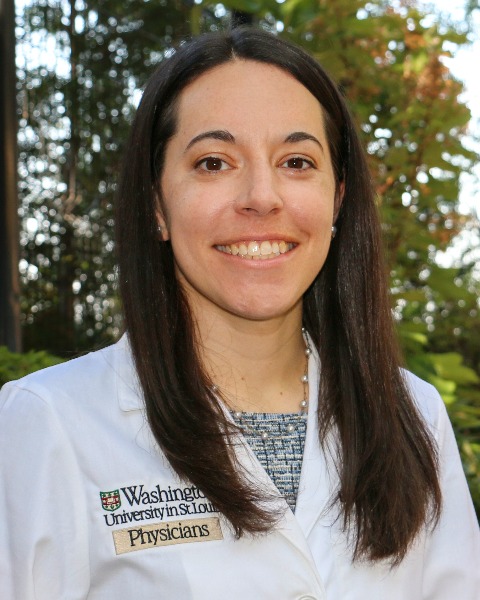Neonatal Neurology 5: Fetal
Session: Neonatal Neurology 5: Fetal
674 - Genetic Diagnoses and Outcomes Among Infants with Neonatal Encephalopathy
Sunday, April 27, 2025
8:30am - 10:45am HST
Publication Number: 674.4998
Marina Metzler, Washington University in St. Louis School of Medicine, ST LOUIS, MO, United States; Rakesh Rao, Washington University in St. Louis School of Medicine, St. Louis, MO, United States; Amy R. Distler, St. Louis Children's Hospital, Columbia, IL, United States; Gina Myers, Washington University in St. Louis School of Medicine, Wentzville, MO, United States; Jennifer Wambach, Washington University in St. Louis School of Medicine, St. Louis, MO, United States

Marina Metzler, DO (she/her/hers)
Fellow
Washington University in St. Louis School of Medicine
ST LOUIS, Missouri, United States
Presenting Author(s)
Background: Neonatal encephalopathy secondary to hypoxia-ischemia (HIE) often cannot be distinguished from genetic disorders presenting in the perinatal period. Both genetic disorders and HIE may have overlapping clinical presentations, particularly in the absence of perinatal events. Genetic disorders are often identified later in a neonate’s clinical course after therapeutic hypothermia (TH). Earlier identification of neonates with genetic disorders may help target treatment and avoid potentially harmful complications of TH.
Objective: To evaluate clinical features of neonates presenting with encephalopathy and treated with TH who are ultimately diagnosed with a genetic disorder. To determine whether neonates with genetic disorders and encephalopathy can be distinguished a priori before treatment with TH.
Design/Methods: We performed a retrospective review of all neonates who underwent TH for suspected HIE admitted to the neonatal intensive care unit (NICU) over a 5-year period between 2018-2023. Clinical characteristics, genetic testing results, and outcomes were extracted from the medical records.
Results: Of the 319 neonates with encephalopathy, 62 (19%) underwent genetic testing. Of these 9/62 (15%) had pathogenic variants identified (Table 1), 22/62 (35%) had one or more variants of uncertain significance, 3/62 (5%) had benign variants, and 31/62 (50%) had non-diagnostic results. The most common genetic test obtained was chromosomal microarray (68% of tested neonates), however, genome sequencing was increasingly obtained during the later years of this cohort. Neonates who underwent genetic testing had higher mortality, increased length of stay (LOS), and increased need for feeding support at discharge compared to those who did not receive genetic testing (Table 2). Acute perinatal events such as placental abruption, uterine rupture, shoulder dystocia, or cord prolapse were not seen among the infants who underwent TH and received a genetic diagnosis.
Conclusion(s): Genetic testing was performed in nearly 1 in 5 infants admitted with HIE. Clinically significant pathogenic variants were identified in 15% of those tested. Indications for genetic testing in this population need to be further defined to guide clinicians in optimizing the management neonatal encephalopathy.
Neonates with underlying genetic conditions were more likely to require feeding support at discharge, had longer LOS, and higher mortality. As infants with HIE are at increased risk for adverse neurodevelopment, the identification of a genetic diagnosis may further impact prognosis, neurodevelopment, and recurrence risk.
Table 1
.png) Pathogenic variants identified.
Pathogenic variants identified.Table 2
.png) Values are mean unless otherwise noted. Chi square test was used for categorical variables and a t-test for continuous variables. P<0.05 was considered statistically significant.
Values are mean unless otherwise noted. Chi square test was used for categorical variables and a t-test for continuous variables. P<0.05 was considered statistically significant.
